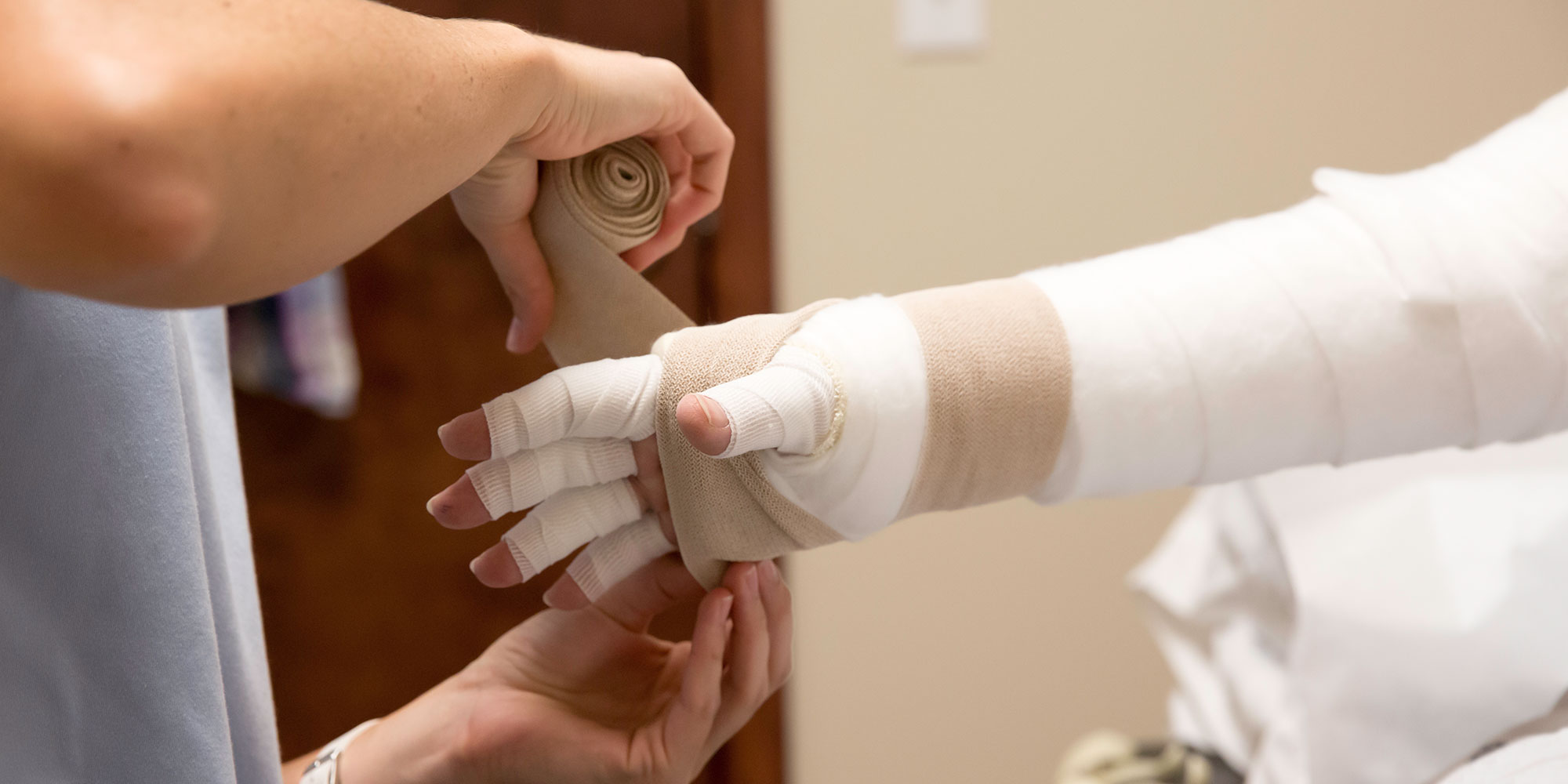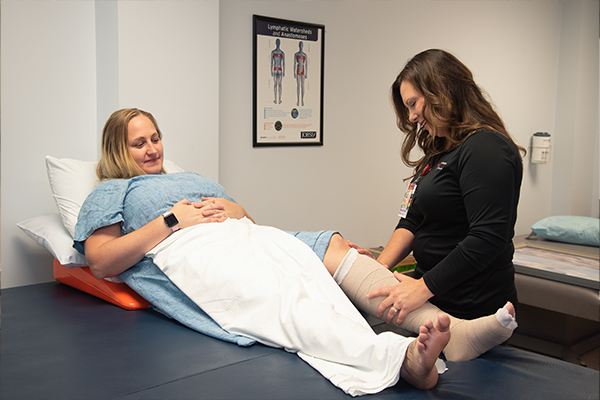Lymphedema Management

Controlling Lymphedema
Sunnyview Rehabilitation Hospital’s lymphedema management program offers a comprehensive treatment of patients suffering from both primary and secondary lymphedema.
What is Lymphedema?
Lymphedema is is an accumulation of lymphatic fluid in the interstitial tissue that causes swelling, most often in the arms or legs, and occasionally in other parts of the body.
There are two types of lymphedema:
- Primary lymphedema is due to a congenital malformation in which lymphatic vessels are impaired or missing.
- Secondary lymphedema can occur after an infection, a traumatic injury, surgery, and cancer treatment (radiation and/or surgery).
Individuals with lymphedema experience a feeling of heaviness in their limb(s), persistent swelling, slight discomfort in the joints, cosmetic deformity, and repeated episodes of infection, such as cellulitis, in the affected area. Left untreated, lymphedema can lead to:
- Significantly increased limb size with reduced range of motion
- Decreased function and eventual disability of the extremity
- Fibrosis of the tissue with permanent disfigurement
- Fungal and bacterial infections
- Chronic ulcerations/wounds
- Tissue death
Lymphedema Treatment: What to Expect
Lymphedema can limit the ability to perform self-care, home management, community activities, and work. The most effective treatment of lymphedema is a course of Complete Decongestive Therapy (CDT) performed by a qualified therapist. CDT consists of five components:
- Manual lymph drainage (MLD) - a gentle therapeutic massage technique that stimulates existing lymph nodes and pathways to assist the body with draining excess fluid. This is a "hands-on" manipulation of both the body tissue with lymphedema and the adjacent selected areas.
- Compression bandaging and compression garments - bandaging of the affected limb follows each session of MLD. The bandages are worn continually to keep the limb from refilling with lymph fluid. This is done for a period of two to six weeks in preparation for fitting the limb with a compression garment.
- Remedial exercises - an individualized exercise program is developed for each individual to be completed while wearing compression.
- Skincare - meticulous skincare is essential for individuals with lymphedema. Each individual will be trained in skincare techniques to reduce the risk of infection.
- Patient education - the most essential part of lymphedema treatment. Individuals are educated in all aspects of their lymphedema management program. This improves the individual's compliance with recommendations resulting in a better long-term outcome.

Start Your Recovery
Call us today for more information about our rehabilitation programs.
Fax: 518-386-3619
Call: (518) 382-4516